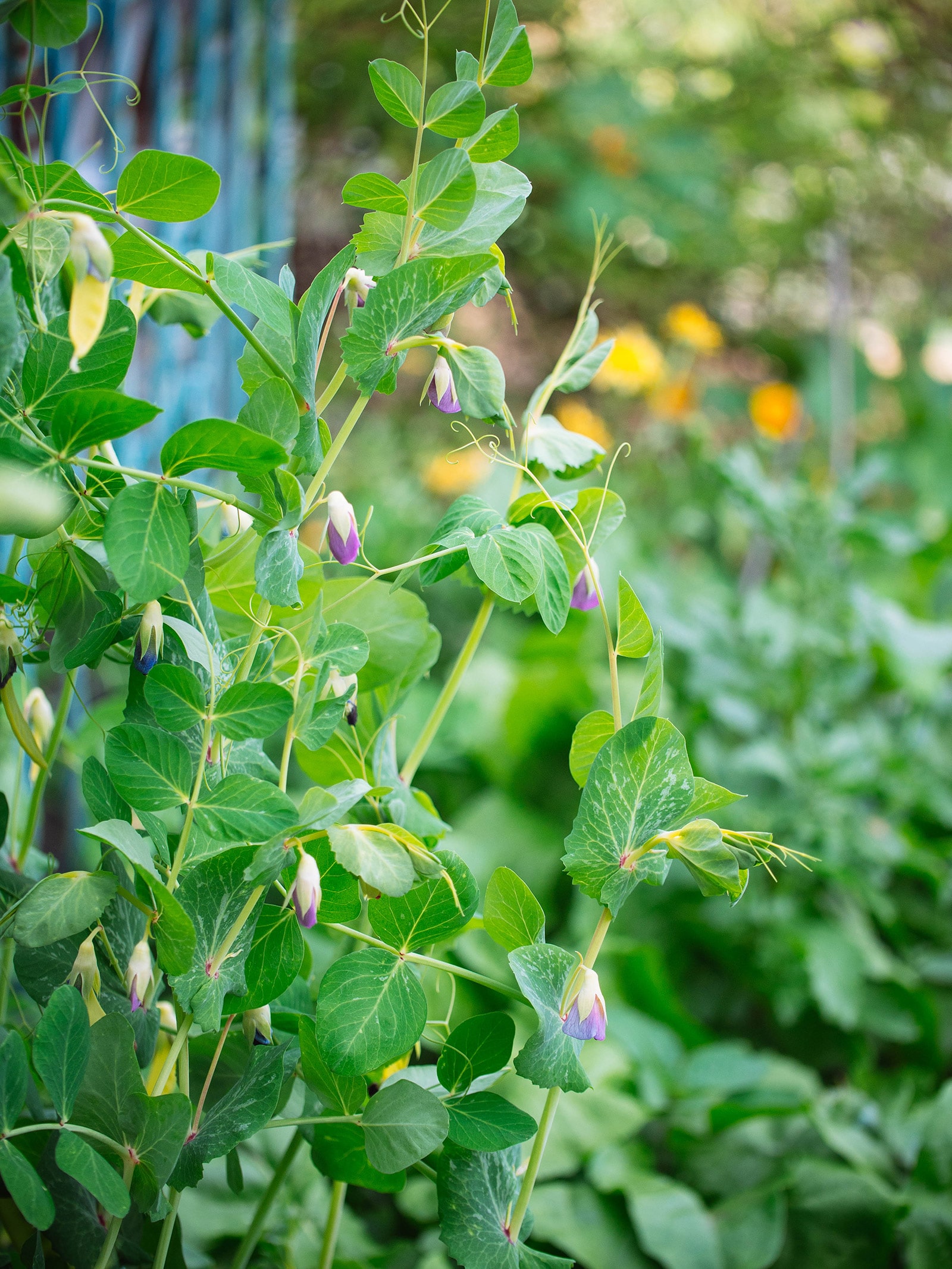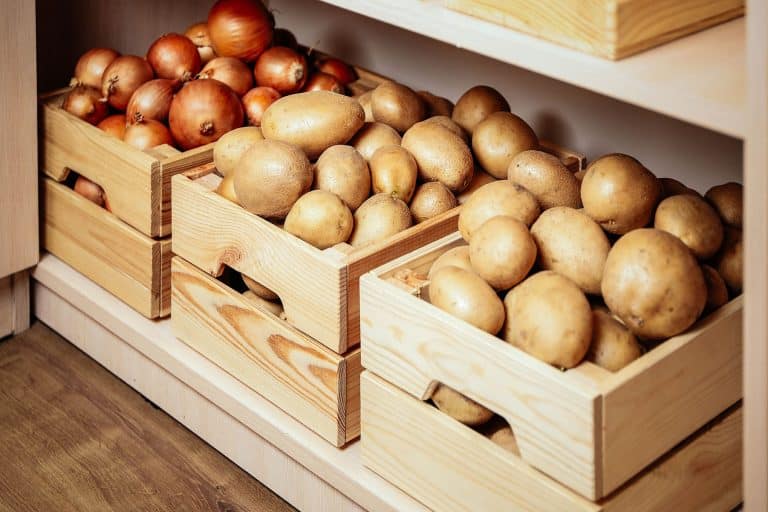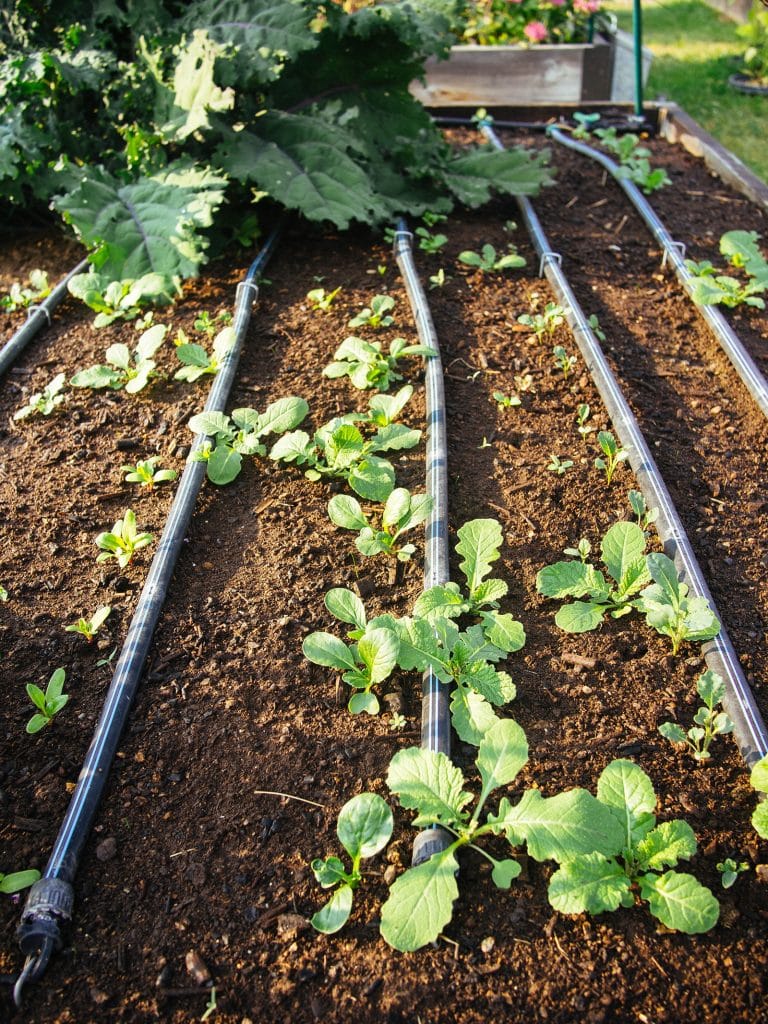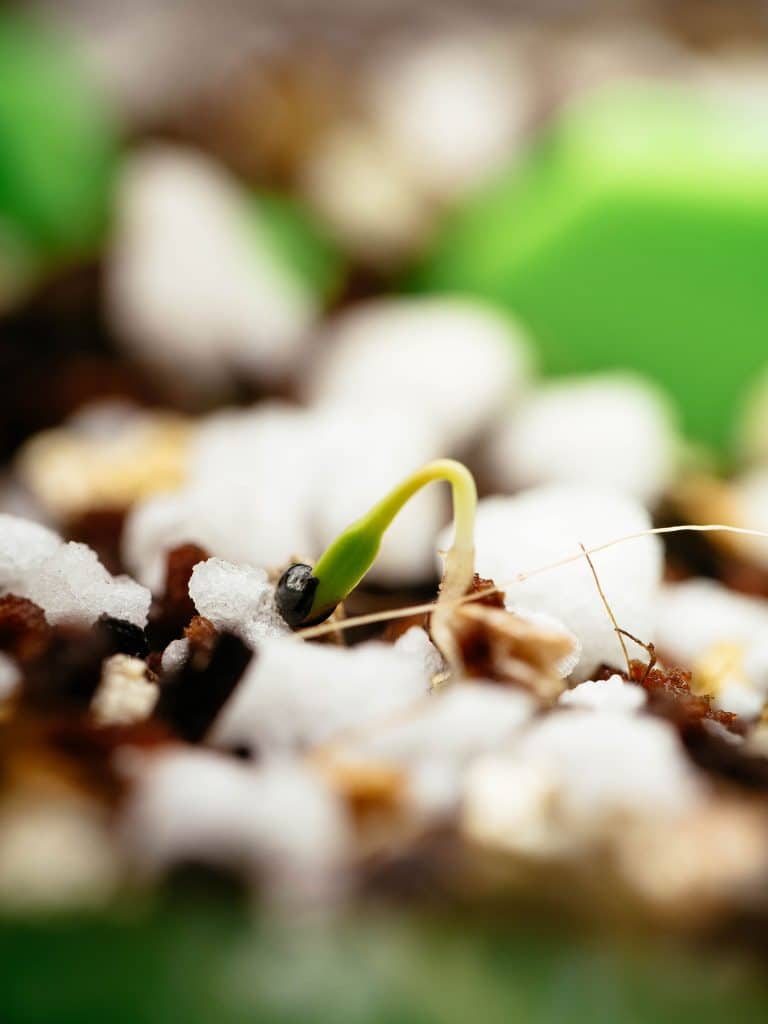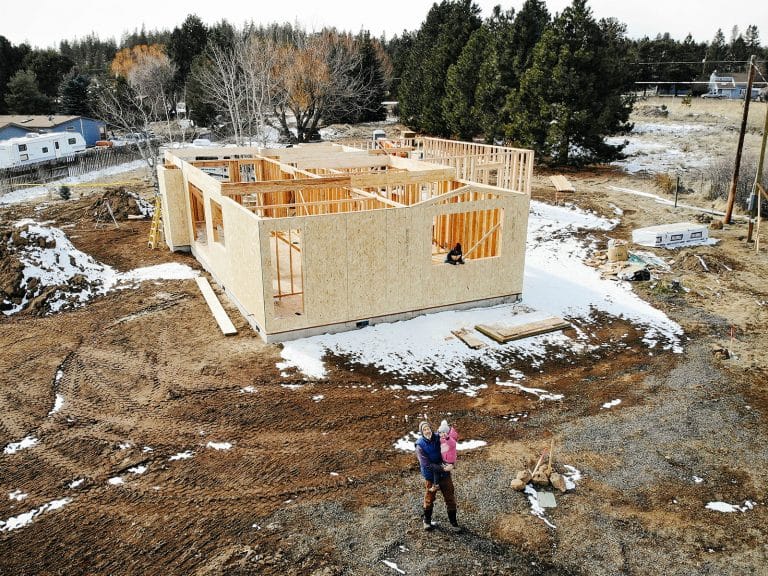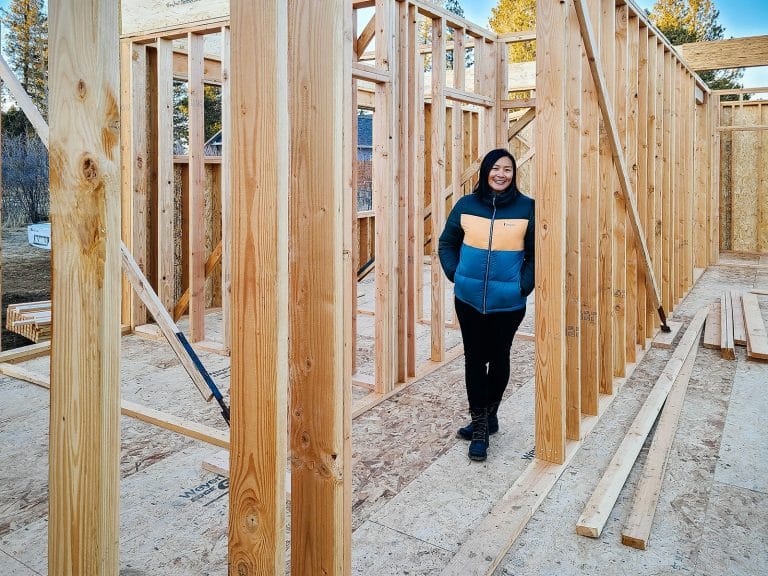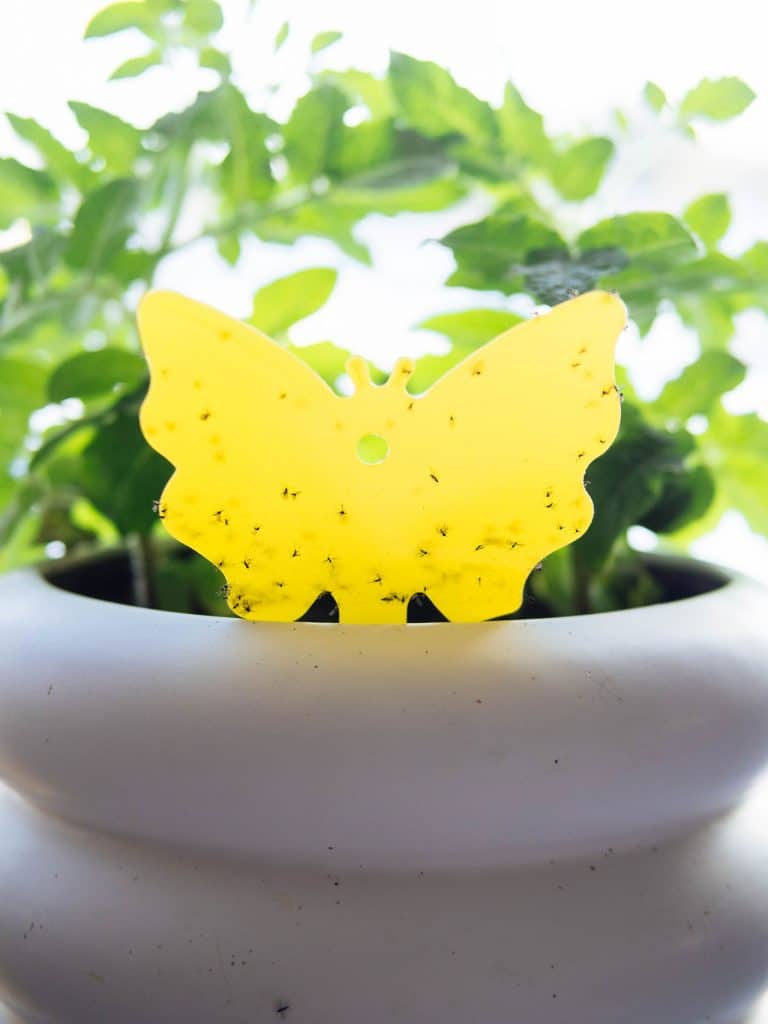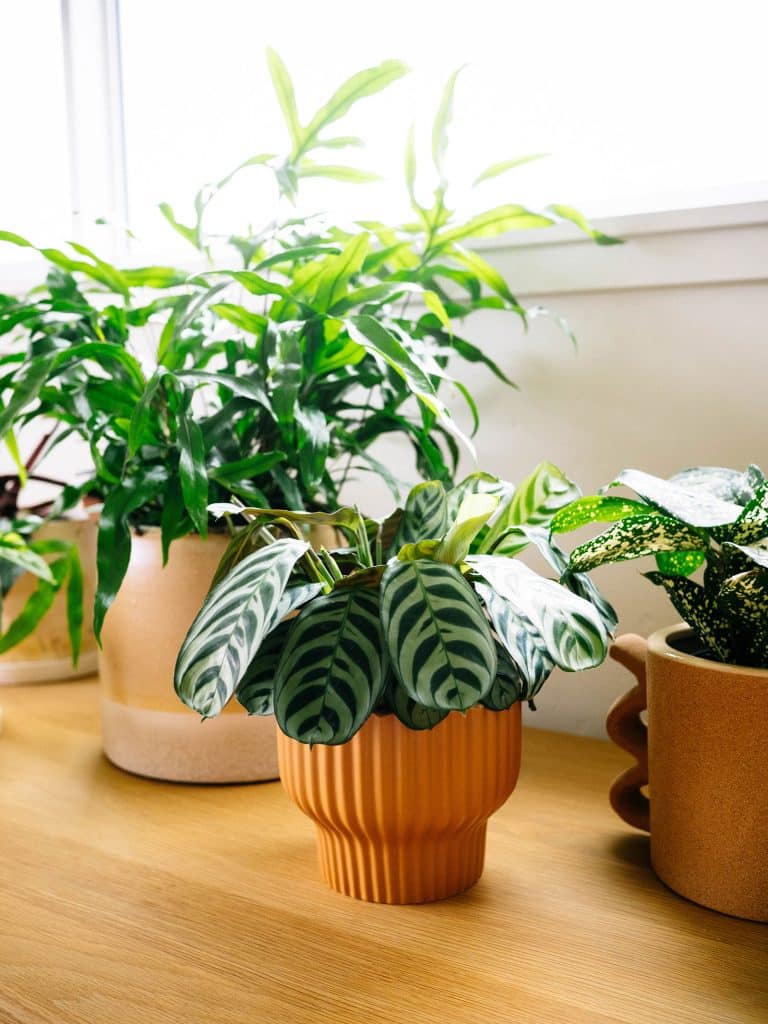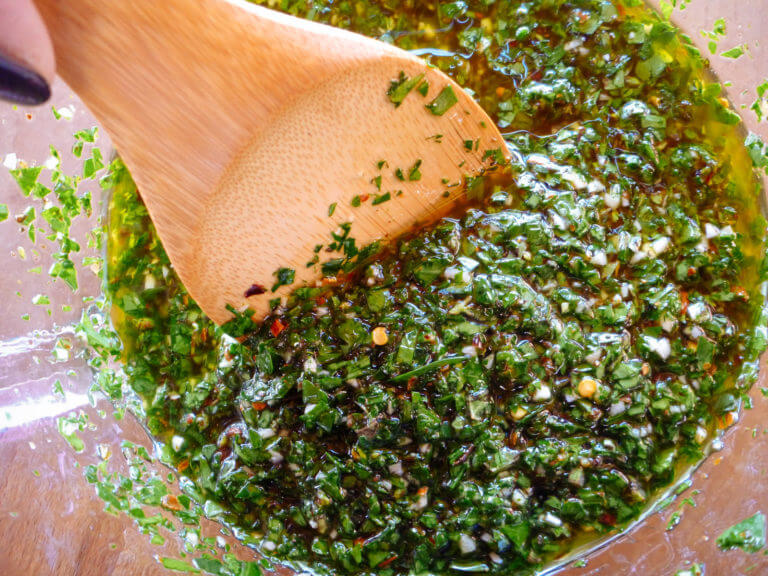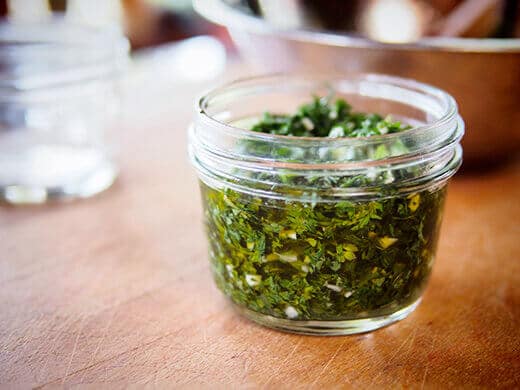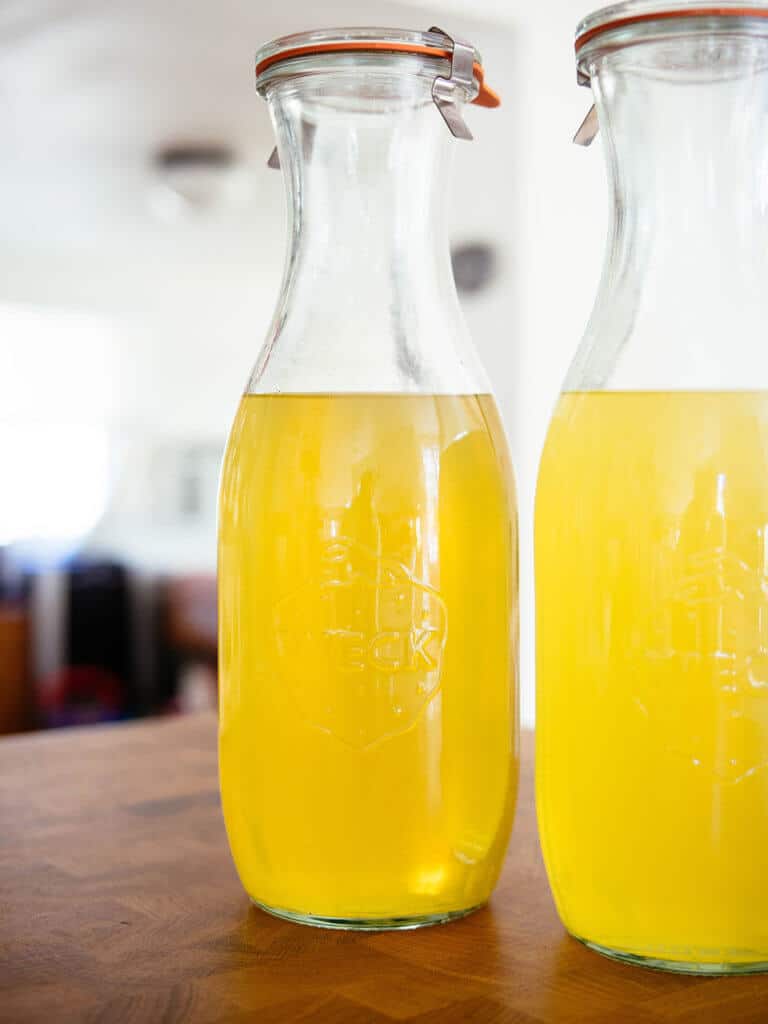Legume crops have long been known to be good for your garden by fixing nitrogen and improving soil fertility. These legumes include green beans, fava beans, snap peas, vetches, clovers, and cover crops like Austrian winter peas.
But how exactly do they “fix” nitrogen in the soil, and what does that mean anyway?
As you probably know, nitrogen plays a critical role in plant growth. Without it, plants cannot grow taller or produce bigger yields. But even though there’s abundant nitrogen in the air, it’s present in a form that cannot be used directly by plants.
Legumes, however, have the ability to convert this gaseous nitrogen into a readily available form they can use by forming a symbiotic relationship with a strain of soil bacteria called Rhizobium.
Here’s how that happens…
When rhizobia sense the presence of legume roots in the soil, the bacteria will multiply, attach to the root hairs of the plant, and cause the roots to swell and form the nodules you see below (a process called nodulation).
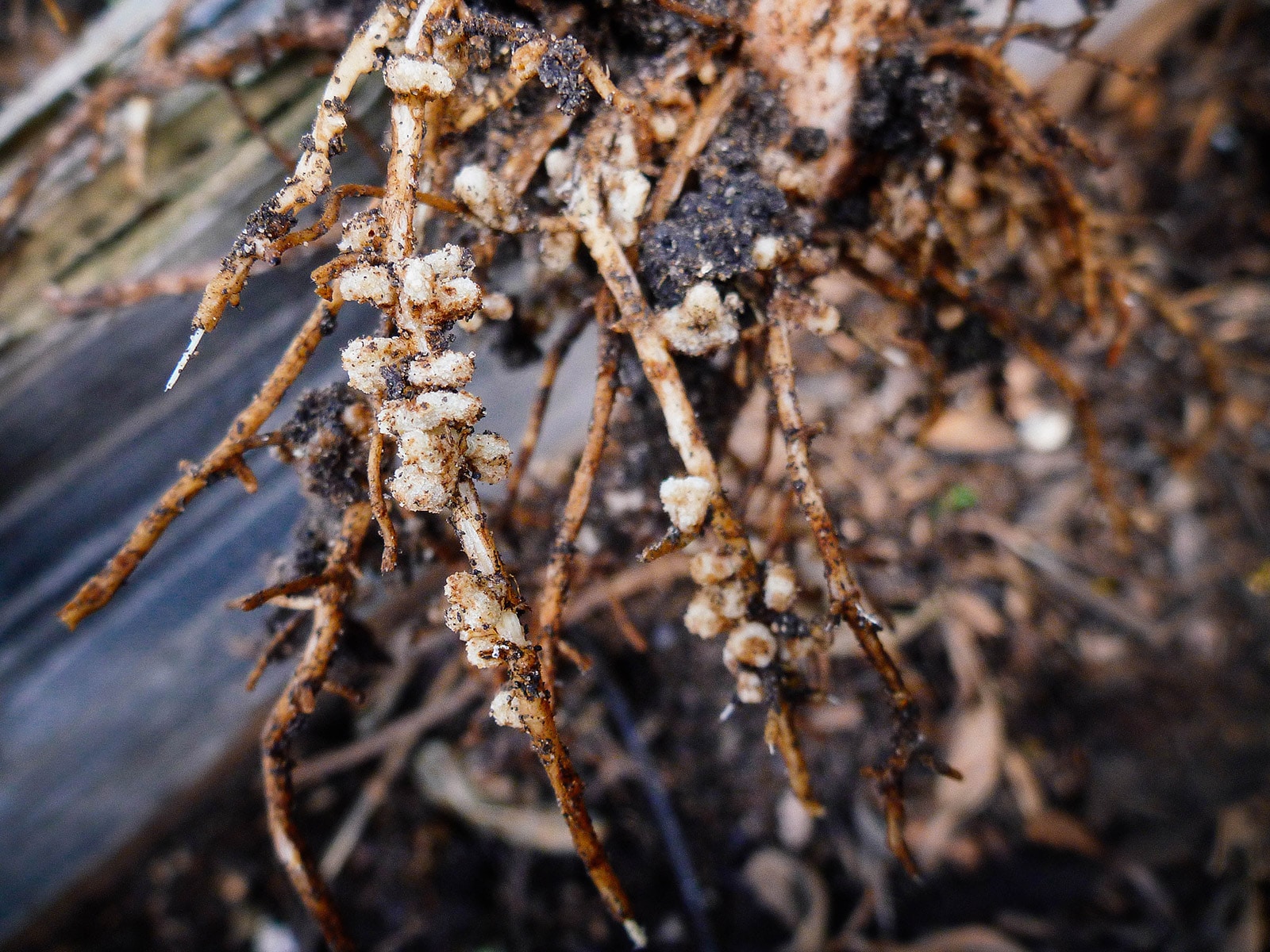
(Side note: These swollen roots are not to be confused with root-knot nematode damage, which also appears as bumps on roots.)
After they’re attached, the rhizobia form an infection thread to enter the plant, which then supplies all the sugars and other nutrients necessary for the rhizobia to survive.
But all of this isn’t as nefarious as it sounds. Within these nodules, rhizobia live in harmony with their host plant, where each organism receives something from the other and gives something back. (If you’ve read my other post about the beneficial relationship between mycorrhizal fungi and their host plants, you get the idea.)
So what does the plant get in return?
Through a naturally occurring process called nitrogen fixation, the rhizobia draw (or “fix”) nitrogen gas from the atmosphere and convert it into ammonium compounds that provide essential nutrients for the host plant. This biochemical reaction takes place in the root nodules formed by the rhizobia.
This is why peas, beans, and other legumes don’t need nitrogen fertilizer if the right types of rhizobia are in the soil—they can make their own.
When the host plant dies and its vegetation (leaves, fruits, and roots) decomposes, the fixed nitrogen is released into the soil and made available for other plants to use. That means legumes naturally enrich, rather than deplete, the soil wherever they’re grown—as long as you incorporate them into the soil before the plants go to seed.
Because of this mutually beneficial relationship, rhizobia always require host plants and cannot fix nitrogen independently. They can live in the soil for some time without food, but to sustain soil health, it’s important to “feed” this friendly bacteria by rotating symbiotic crops such as peas and beans through all your garden beds.
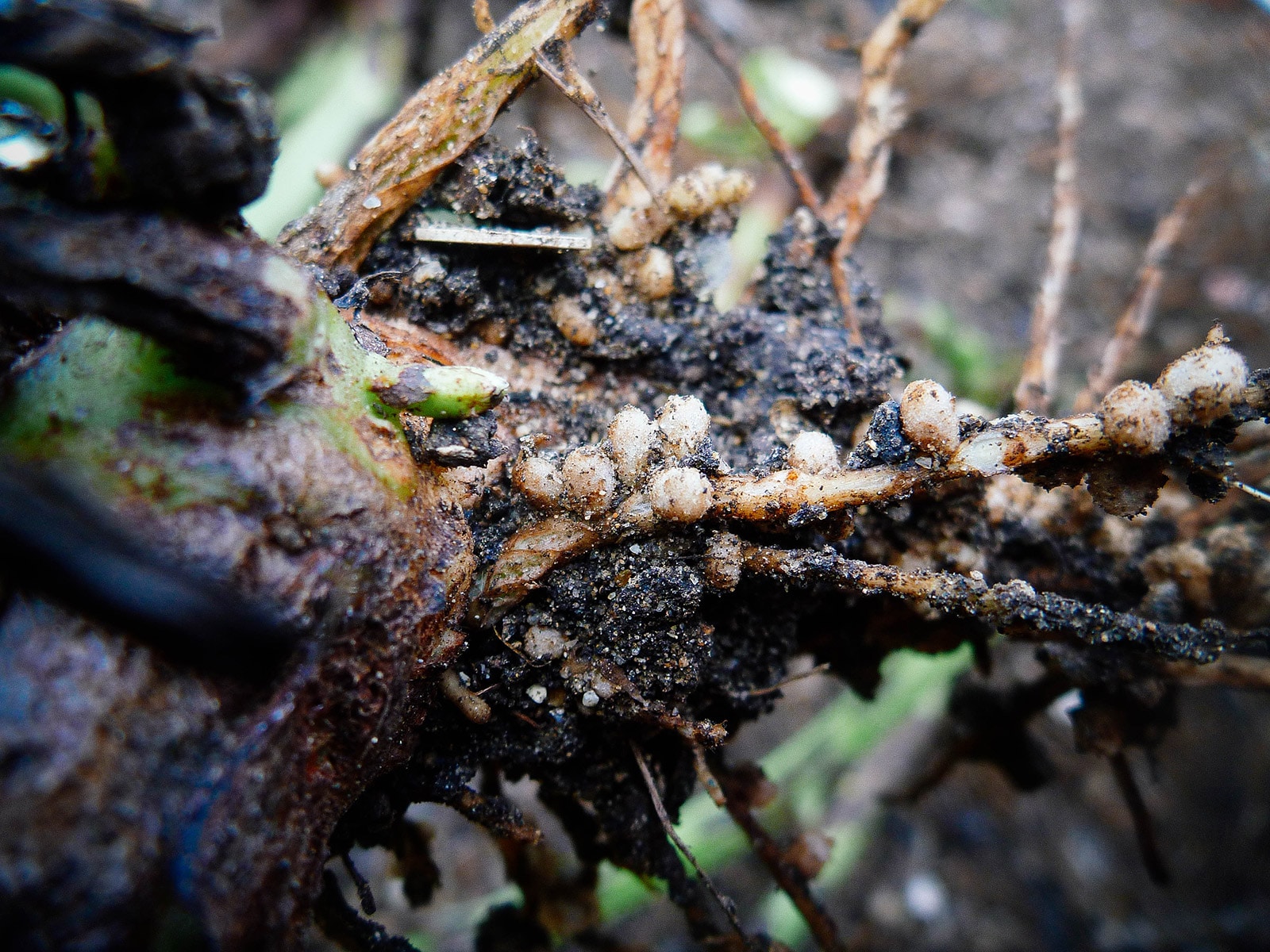
If you grow the same types of legumes in the soil at least once every couple of years (even if you simply sow cover crops like fava beans or other edible cover crops like cowpeas and pigeon peas), you can help the rhizobia population thrive and improve soil fertility without ever using fertilizer.
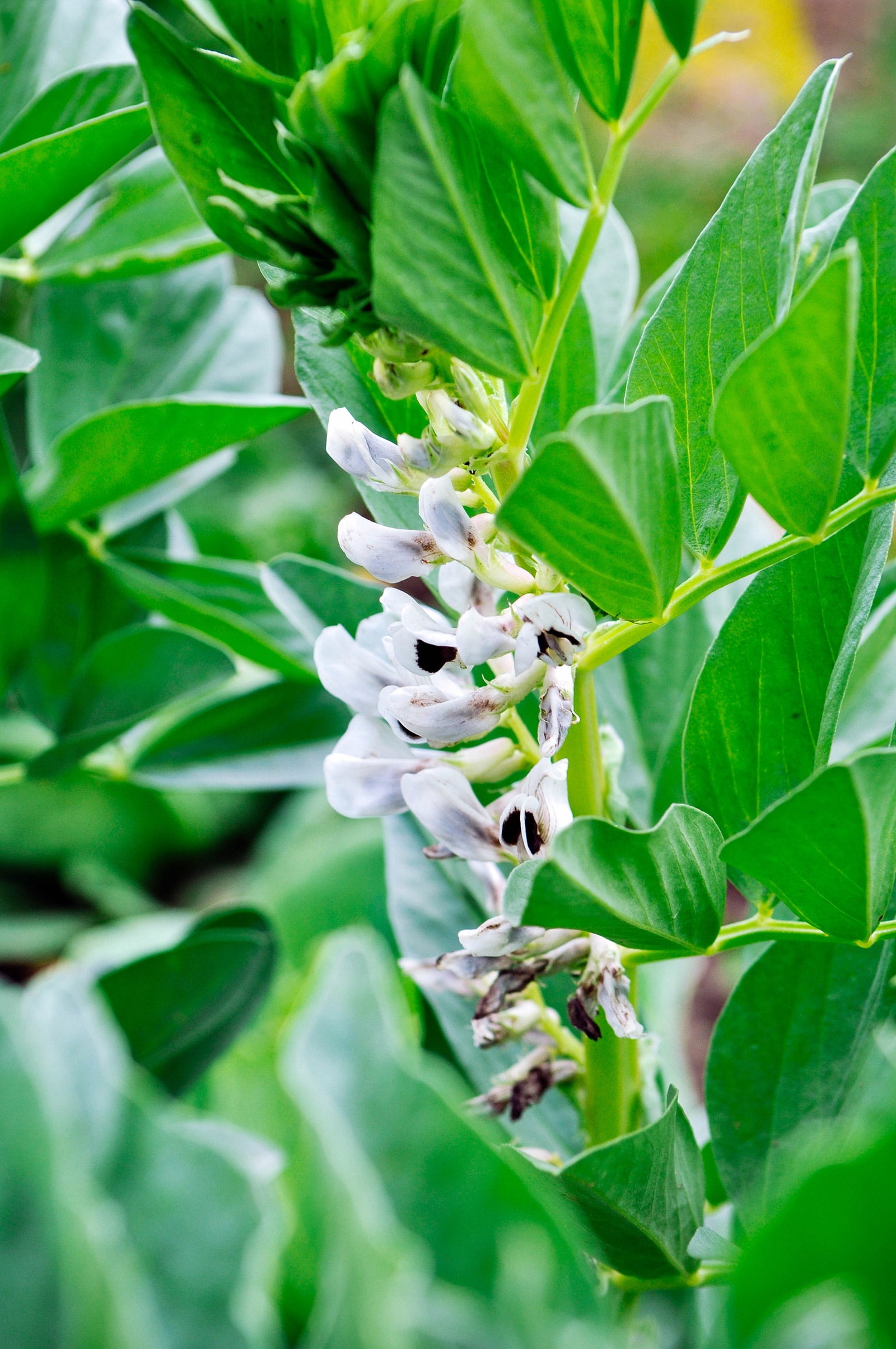
But, there’s a big but here: While rhizobia are generally present in the soil year-round, their populations may be too low to maximize nitrogen fixation, or the bacterial strains might not be compatible with the legumes you’re growing.
That’s why, if you want to maximize their benefits, it’s a good idea to inoculate the seeds or soil with rhizobia before you plant. Specific strains of rhizobia work with different legumes, so make sure you read the labels carefully and purchase the correct rhizobia for the crop you want to sow.
Disclosure: If you shop from my article or make a purchase through one of my links, I may receive commissions on some of the products I recommend.
Where to buy


